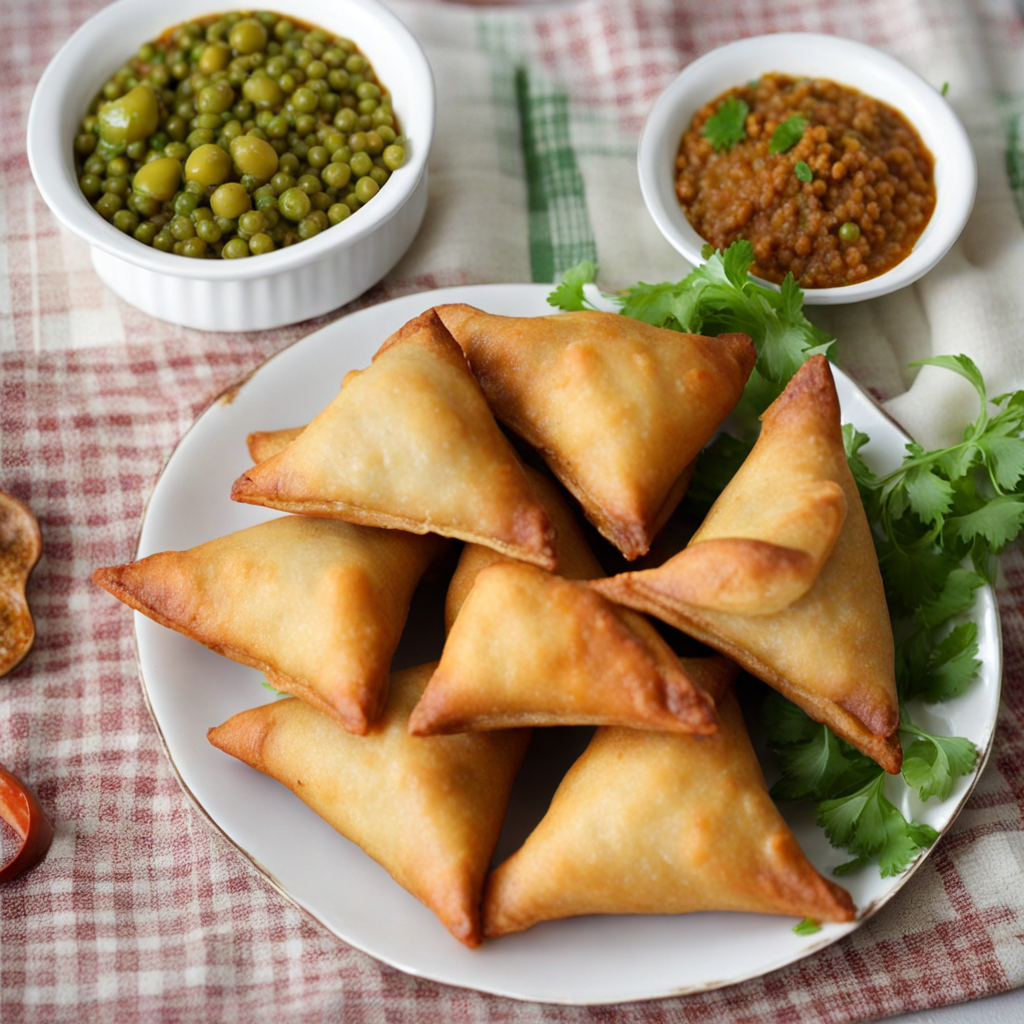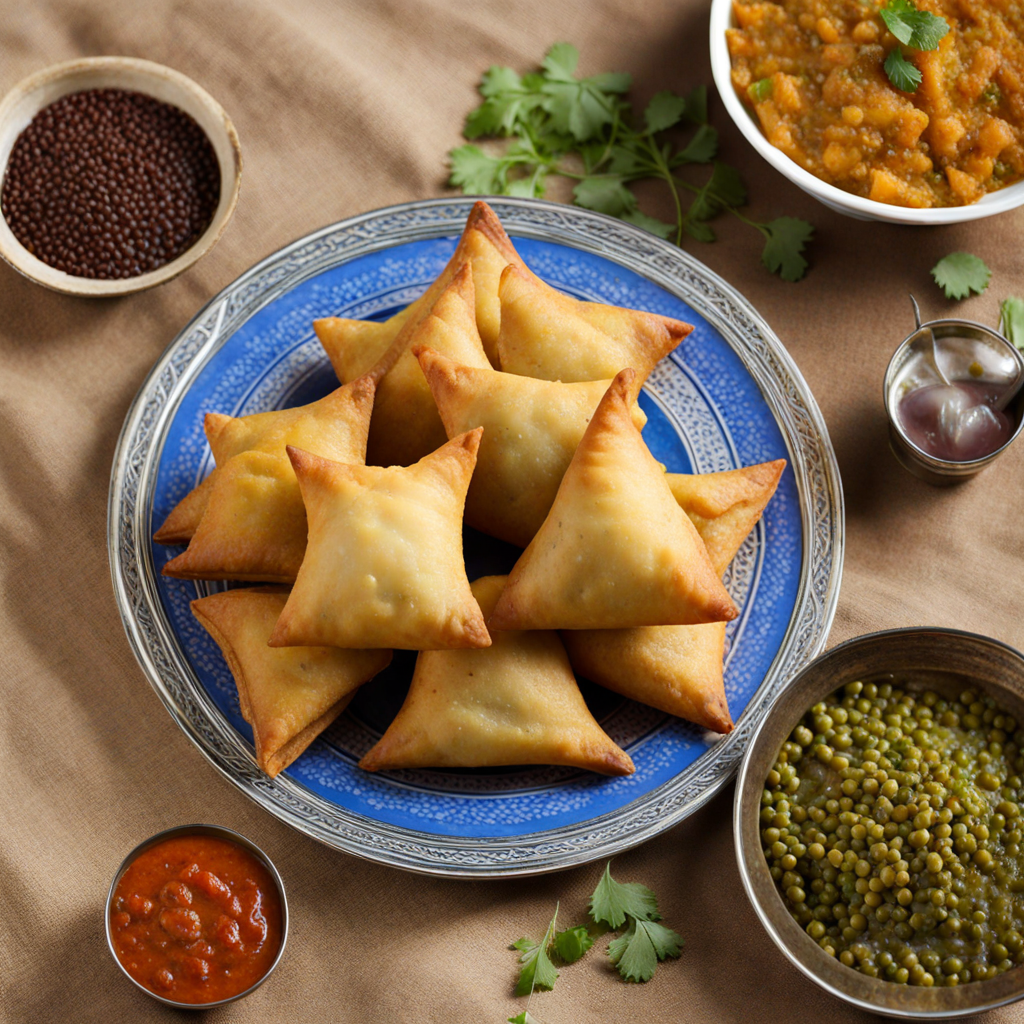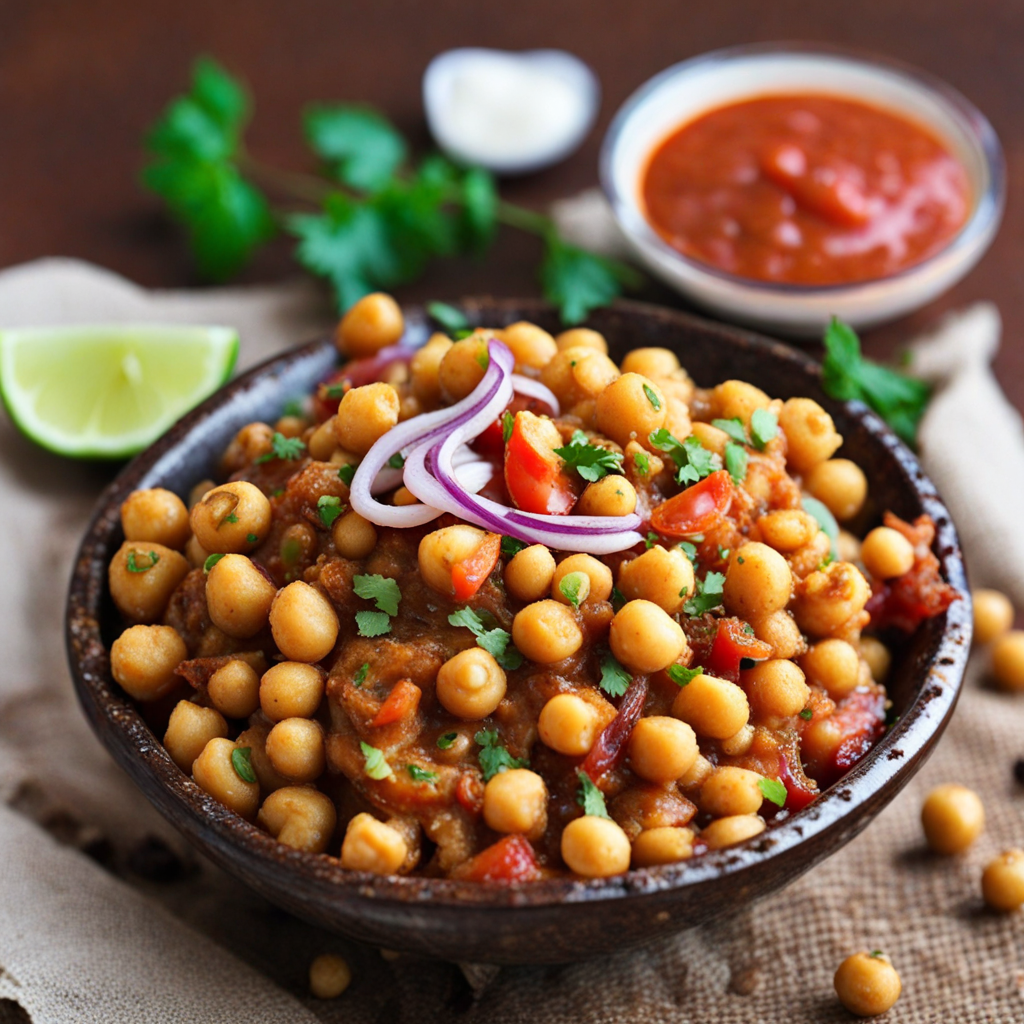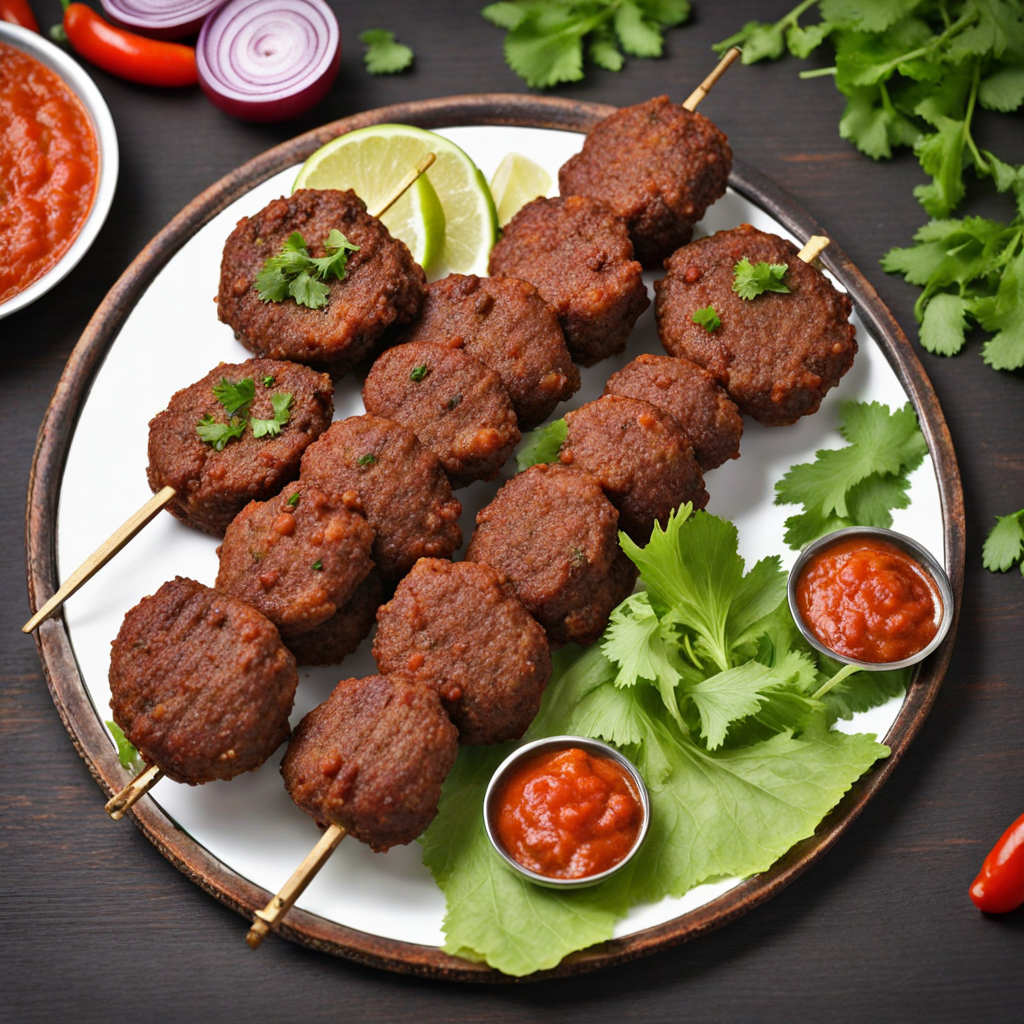Samosa
Samosa is a beloved snack originating from the Indian subcontinent, particularly popular in Pakistan, where it is cherished as a savory treat. This deep-fried pastry has a crisp and golden exterior that gives way to a flavorful filling, typically made from spiced potatoes, peas, and sometimes lentils or meat. The outer layer is crafted from unleavened dough, rolled thin and folded into a triangular shape, which not only adds texture but also serves as a perfect vessel for the delicious fillings. The flavor profile of samosas is a delightful fusion of spices that represent the rich culinary heritage of Pakistan. Common spices include cumin, coriander, garam masala, and chili powder, which infuse the filling with warmth and depth. Each bite delivers a satisfying crunch followed by a burst of savory flavors, making it an irresistible snack for any occasion. Samosas are often served with tangy tamarind or mint chutney, enhancing their flavor and adding a refreshing contrast. Beyond their taste, samosas are often associated with social gatherings and celebrations, making them a symbol of hospitality in Pakistani culture. Whether enjoyed as a street food snack or as an appetizer at a festive meal, they bring people together, inviting conversations and shared experiences. The combination of their delightful taste and cultural significance makes samosas a must-try for anyone looking to explore the rich and diverse flavors of Pakistani cuisine.
How It Became This Dish
The History of Samosa: A Culinary Journey from the Subcontinent #### Origins: The Birth of a Culinary Icon The samosa, known as 'سموسہ' in Urdu, is a beloved snack that has transcended borders, cultures, and culinary traditions. Its origins can be traced back to the Middle East, with historical accounts suggesting that the samosa dates back to the 10th century. The term "samosa" is thought to be derived from the Persian word "sambusa," which refers to a stuffed pastry. As trade routes expanded, particularly through the Silk Road, the concept of the stuffed pastry spread across various regions, including Central Asia, the Indian subcontinent, and beyond. In the Indian subcontinent, the samosa gained significant popularity during the medieval period, particularly under the influence of the Mughal Empire. The Mughals, known for their lavish feasts and culinary innovations, integrated diverse regional flavors and techniques into their cuisine. The samosa, with its flaky exterior and savory fillings, became a staple on royal dining tables and gradually made its way into the homes of common folk. #### Cultural Significance: A Snack of Celebration The samosa is more than just a snack; it holds cultural significance across the Indian subcontinent, particularly in Pakistan, where it is a staple at social gatherings, festivals, and religious events. Its triangular shape symbolizes prosperity and good fortune, making it a popular choice during weddings, Eid celebrations, and other joyous occasions. Families often gather to prepare samosas together, fostering a sense of community and shared tradition. In Pakistani cuisine, samosas are typically filled with spiced potatoes, peas, or minced meat, reflecting the region's rich agricultural heritage. The fillings can vary widely, with regional variations incorporating local spices and ingredients. For instance, in Karachi, one might find samosas filled with spicy lentils, while in Punjab, minced meat wrapped in crispy pastry might be more common. These variations highlight the adaptability of the samosa to local tastes and preferences. #### Development Over Time: From Street Food to Culinary Delight As the samosa evolved, its popularity spread beyond royal courts and homes into the streets, where it became a beloved street food. Vendors known as "samosa walas" began selling freshly fried samosas from carts, making them accessible to the masses. This development marked a significant shift in the perception of samosas—from a luxurious item to an everyday snack enjoyed by people from all walks of life. The preparation of samosas involves a meticulous process. The dough is made from flour and water, kneaded until smooth, and rolled into thin circles. The filling, often a mix of boiled potatoes, peas, and spices, is placed in the center of the dough circle, which is then folded and sealed into a triangular shape before being deep-fried until golden brown. This artisanal process not only preserves the traditional method of preparation but also ensures that each samosa is a labor of love, infused with flavors and aromas that evoke nostalgia and comfort. In the late 20th century, with globalization and the rise of food culture, the samosa began to gain international attention. It was introduced to various parts of the world, including the United States, Canada, the United Kingdom, and Australia, where it was embraced by diverse communities. In these countries, the samosa underwent further transformations, with fillings ranging from cheese and spinach to sweet variations filled with fruits, appealing to a broader audience. #### Modern Interpretations: Fusion and Innovation In recent years, the samosa has experienced a renaissance of sorts, with chefs and home cooks experimenting with new flavors, fillings, and presentation styles. The fusion food trend has led to the creation of unique variations, such as the "samosa chaat," where crumbled samosas are topped with yogurt, tamarind chutney, and spices, transforming it into a hearty street food dish. Similarly, samosas filled with global ingredients like buffalo chicken or even dessert fillings like chocolate have emerged, showcasing the versatility of this iconic snack. The rise of food trucks and pop-up restaurants has also contributed to the samosa's evolution. Innovative chefs are reimagining the samosa in gourmet settings, serving it alongside artisanal dips and pairing it with craft beverages. This contemporary approach has not only elevated the samosa's status but has also introduced it to a new generation of food enthusiasts. #### Samosa in Popular Culture The samosa's presence in popular culture is noteworthy, too. It has been featured in countless cooking shows, food blogs, and social media platforms, often celebrated for its delightful crunch and savory filling. Additionally, the samosa has found its way into various culinary competitions, where chefs showcase their creativity and skill in preparing this iconic snack. In literature and film, the samosa often symbolizes comfort and nostalgia, evoking memories of home, family gatherings, and cultural heritage. This representation reinforces the samosa's role as a unifying food that transcends individual experiences, connecting people through shared culinary traditions. #### Conclusion: A Timeless Snack As we journey through the history of the samosa, it becomes evident that this simple pastry is a testament to the rich tapestry of cultural exchange, culinary innovation, and communal bonding. From its humble beginnings in the Middle East to its status as a cherished snack in Pakistan and beyond, the samosa embodies the spirit of adaptability and resilience. Today, the samosa continues to be a beloved snack, enjoyed by millions around the world. Whether it is savored at a bustling street stall, served at a family gathering, or enjoyed at a gourmet restaurant, the samosa remains a symbol of cultural pride and culinary heritage. As it evolves and adapts to contemporary tastes, one thing is certain: the samosa will forever hold a special place in the hearts and palates of those who cherish its deliciousness.
You may like
Discover local flavors from Pakistan







